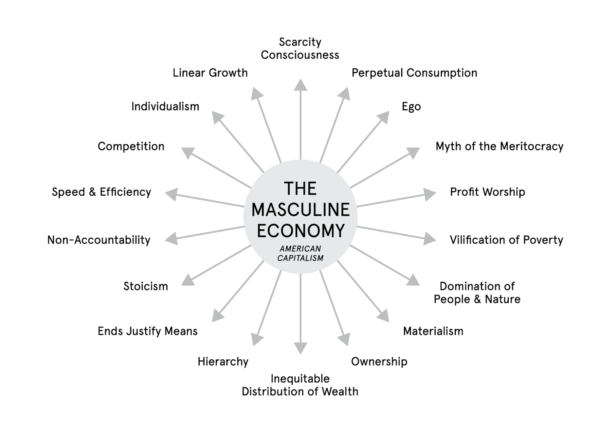Why does supporting women even matter? These are my own professional and personal experiences.
For 15 years, I sold my soul designing workforce solutions and hiring for corporate America.
While there are a couple of good reasons for the staffing industry to exist, it’s primarily a shelter for corporate America to outsource higher percentages of its workforce in an effort to remain ‘agile and competitive,’ while it creates more unstable, temporary employment, especially for the entry-to-mid level workforce. The real harm is that many of these corporations mandate what their staffing providers pay these entry-level employees; often times it’s as low as 55% of what they would have paid those same employees if they’d been kept in-house. These corporations also avoid paying for stable healthcare and other long-term benefits. It is a racket.
Mind you, I would always marvel at these same corporations’ mission statements, their philanthropic efforts, and social responsibility programs because they were impressive. I would watch the same corporations deliver blow after blow to the very workforce that creates their shareholder profits. I could no longer stay in this line of work and I knew I could no longer spend my money with those companies. I had to make a change. I started by knowing where I didn’t want to spend my money before I knew where I did want to spend my money.
For reference, in my personal life, I’m the mom of four daughters, and my husband and I pride ourselves on the fact that we didn’t adopt many gender norms and stereotypes. For example, I worked and my husband was the stay at home parent for those four small, awesome daughters.
My AH-HA moment was five years ago.
We’re sitting on our living room floor watching a NFL football game and it was the first time I realized that five out of the six people in my own household were female, and yet we watched all-male sporting events. I slowly started to question whether or not we acted in alignment with our values. Could we prove it? It was one thing for us to believe that we support women and men equally, and it’s quite another to say that we can actually prove it.
To find out, we started with super simple questions like, when we were having conversation at dining room table, were we referencing female thought leaders as often as male thought leaders? We weren’t. We moved into movies and books next: were women creating, directing, acting at the same rate to men? Nope. I realized how androcentric our world really was, and how that norm is so comfortably engrained in all of us, that for forty years, I didn’t notice it. We weren’t aiming for 100% women, we just wanted to prove equal, 50%. Products, services, and restaurants came next, we weren’t even to 5%. Annoyed, I gave our family our personal challenge, a “Put your money where your mouth is” challenge: if 83% of your household is female, 83% of your household spending should be with women-owned, women-created products and services.
At this point, I thought back to my professional days. When I entered the workforce, I was trained how to behave, how to present, how to succeed. I was really trained on how to acclimate to male norms, male rules, and male ways of doing business. I was trained to be the best male version of myself. I get that that’s how America’s workforce started, but it doesn’t have to continue that way. We can be better.
There are many people trying to affect change in corporate America and in policy-making. But those institutions are huge, and affecting change from within takes way too much time, these corporation’s actions prove that they’re not that motivated to change. But, guess what they will listen to, and quickly? Your money. Withdraw your money and you’ll get their attention.
So then, who should you give your money to? Who’s worthy of it?
It’s so hard to know what’s real and what is just good marketing and PR. When we support women-owned businesses, we:
- Envision new ways of ideating and creating that differs from the traditional masculine economic systems- none of which were created by women nor for women
- Enable women to actualize their own ideas and passions
- Support our communities more directly
- Allow women to lead for profit businesses and establish new norms for doing business together, which will give voice to the social enterprises and social impact movements that women lead
- Aid in women’s financial independence that gives women the ability to make their own decisions, no strings attached
- Speed up gender pay parity
- Speed up the advancement of women at the highest levels of leadership
- Ideate a new ebb and flow to the way we choose to balance our lives and our work
We all know real humans in our own communities who are providing exceptional goods and services. We believe in Shopping Small, Buying Local, Going GLocal. We ask that with these movements towards socially conscious consumerism, economically include women at your party, equally! We can’t fix any other inequities without fixing what it means to 50.8% of the population.
MAIA embraces a more feminine economy and female-centric economy.

